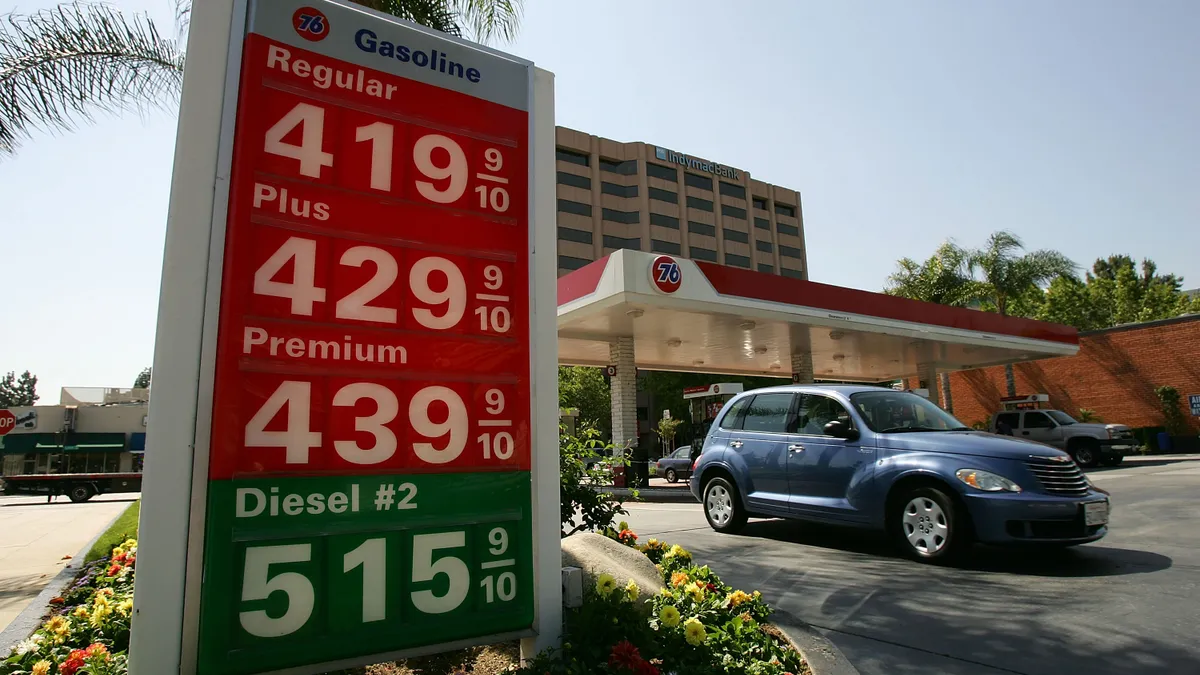Dive Brief:
- They say what goes up, must come down. But construction material pricing has been testing that inevitability for over two years, with no discernable end in sight.
- Economist Ken Simonson issued yet another construction inflation alert last week, spotlighting the inexorable climb of diesel, aluminum mill shapes, copper and plastic construction products.
- "This period is unique in how broad-based price increases are," said Simonson, chief economist for the Associated General Contractors of America, in an interview. "Previously, we've seen just a limited number of items soaring in price. This time, it's much more extensive in the number and magnitude, long lead times, unexpected shortages and things not showing up in the quantities or times expected."
Dive Insight:
The news adds to overall inflation woes, as the Consumer Price Index jumped 8.5% in March, its highest spike since 1981. The AGC's construction alert was the seventh pricing alarm Simonson has sounded since March 2021. Before that, his employer hadn't put out a similar warning since 2008, at the height of the Great Recession, and never with such an accelerated cadence.
Barry Wurzel, president and founder of commercial contractor Wurzel Builders in Austin, Texas, has seen those impacts first hand.
"Suppliers are constantly repricing, and they'll only hold their prices for 24 hours," Wurzel said. "Owners haven't embraced the change of pace yet, so it puts a strain on the relationship with general contractors."
Chief among the culprits in the latest report was the price of diesel. It was up 33% in five weeks, leading to an all-time high of $5.25 per gallon on March 14. That added to the 237% jump that had already transpired between April 2020, at the beginning of the COVID-19 pandemic, and February 2022.
Now, those price surges are being felt from the basements of skyscrapers all the way up to their highest floors. Giant diesel-guzzling diggers claw away dirt for their foundations, before enormous, diesel-belching tower cranes hoist their steel beams in place. It also adds cost to every item in between.
"Fuel surcharges are common now, and there's typically a separate line for delivery charges that are adjusted according to the change in price," Simonson said. For example, a 10 cent increase per gallon per week might result in a 2% rise in delivery fees, he said.
Other standouts included steel mill products, up 113% between April 2020 and February 2022, lumber and plywood (+101%), copper and brass mill shapes (+52%), plastic construction products (+45%) and gypsum or drywall (+29%).
Cost-bid gap
Simonson emphasized that cyclicity dictates costs must eventually decline. But at what point is an entirely different debate.
For example, while overall construction costs have been increasing rapidly, growing 22% year-over-year through February, contractors' bid prices haven't risen as fast. They were only up 17% during the same timeframe.
The last two times that happened — during the Great Recession, and from October 2016 to November 2018 — the gap between material costs and bid prices didn't close for 26 and 25 months, respectively.
The current pricing-bid gap started in December 2020, or 15 months ago. That means contractors could need to stomach this environment for at least another 10 months, but it could also be much longer, and probably well into 2023.
"I wish my crystal ball were clear enough to predict when this would be over, but if I've learned anything from this period, it's that there always seems to be something on the horizon that keeps us from getting back to so-called normal," Simonson said.
He cited the freak winter ice storm in Texas in 2021 killing resin production capacity, the culprit for high plastic prices; wildfires in British Columbia and soaking rainstorms in the Southeast hampering lumber mill capacity; and the Ever Given container ship blocking the Suez Canal exacerbating an already frayed global supply chain.
A housing offramp?
Add to that increasing interest rates, combined with skyrocketing housing prices in the last two years, and Simonson sees cause for concern. The reason why is because supply is only one side of the supply-demand equation. If demand should drop unexpectedly, that could spell even more trouble for parts of the construction market.
"The area that's probably most at risk at the moment is residential," Simonson said. "We've seen extremely rapid increases in 30-year-fixed mortgage rates as well as house prices themselves. That suggests this huge increase in demand for single family homes in particular is going to diminish at some point, and maybe very abruptly."
Thirty-year fixed mortgage rates jumped from 3% in August 2021 to 4.95% the first week in April, the sharpest climb in three decades, according to Bankrate.com. A half-percent increase in mortgage rates would translate into a $131 higher monthly payment on a $300,000 mortgage, according to CNBC, or nearly $50,000 more over the life of the loan.
If the housing market slows, that could benefit nonresidential contractors, who still haven't caught up in the number of jobs in the sector since the beginning of the pandemic. But it could also have a contagious effect.
"Individuals could pull back to the extent that businesses say, 'Maybe I don't need to build another home improvement store. Maybe I don't need a new warehouse to serve this new subdivision,'" Simonson said. "So we could finally start to see cooling off in demand for some other categories of construction."
But while Simonson ticked off the headwinds dogging the construction industry, he said he wasn't as pessimistic as other economists who have been predicting a recession ahead.
"It's inevitable at some point that demand is going to cool off, but at the moment, I still think it's full speed ahead," Simonson said. "When I see the strong condition of state and local governments in terms of their budgets, corporate balance sheets, household balance sheets, all of these things suggest that there's still plenty of buying power. And presumably, some of that is going to translate into continued demand for construction."















